Sri Lankan troops ordered to open fire on looters and vandals as protests continue
- Published
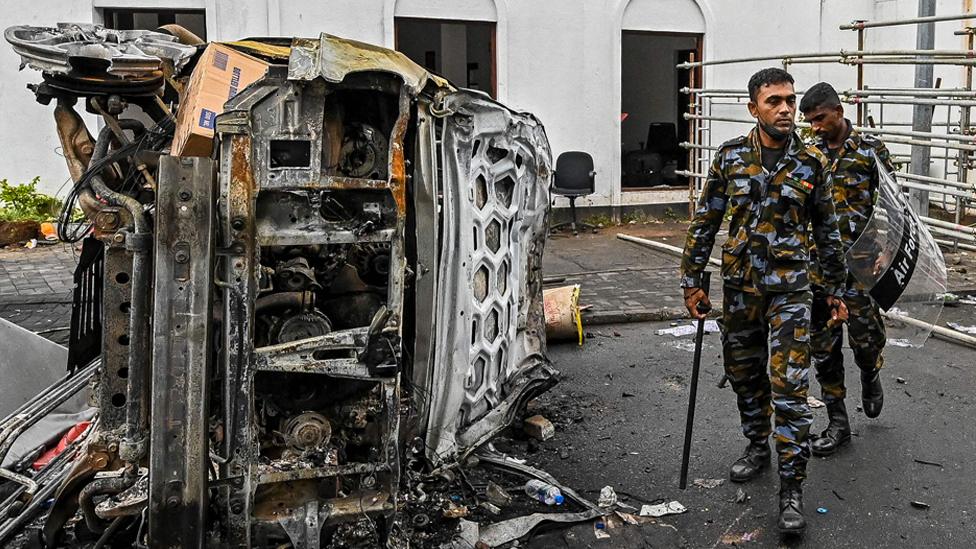
Streets were largely calm on Tuesday but there were signs of the protests everywhere
Sri Lankan security forces have been ordered to shoot law-breakers on sight in a bid to quell anti-government protests on the island.
Demonstrators are calling for the resignation of President Gotabaya Rajapaksa over the island's worst economic crisis in history.
On Monday, his brother, Mahinda Rajapaksa, stepped down as prime minister amid violent street clashes.
But the resignation failed to bring calm and violence continued overnight.
On Tuesday, the government ordered troops to open fire on anyone looting public property or causing "harm to life".
It also deployed tens of thousands of army, navy and air force personnel to patrol the streets of the capital Colombo.
Despite their presence, the city's top police officer was assaulted on Tuesday afternoon by a mob accusing him of not doing enough to protect peaceful protesters.
At Colombo's Galle Face Green, on the sea front, crowds also continued to gather.
Police say eight people have died and the capital's main hospital says more than 200 people have been wounded since Monday.
Some were injured by pro-government mobs, others when police fired tear gas into crowds. Lawyers acting for the protesters told the BBC they were filing cases against supporters of the prime minister.
An island-wide curfew has been extended to Thursday morning as authorities seek to end the violence.
Evidence of last night's rioting is everywhere across Colombo - buses thrown into the lake, others with windows smashed out and tyres still burning.
"I never wanted him" - people from Sri Lanka's protests on the country's leaders
In the north-east, protesters gathered in front of Trincomalee Naval Base after unconfirmed reports that Mahinda Rajapaksa had gone there with family members after escaping from his Colombo residence.
More than 50 houses of politicians were burned overnight, reports say. Crowds remain outside the office of President Gotabaya Rajapaksa, brother of Mahinda, calling on him to quit.

From war heroes to villains

Mahinda (right) served two terms as president before returning as PM under his brother (left)
Anbarasan Ethirajan, BBC News, Colombo
Sri Lankans are still reeling from the violence that has erupted. Many politicians are sheltering in safe houses or avoiding appearing in public.
"It is not at all safe, particularly for politicians on the government side," Nalaka Godahewa, until recently media minister, told the BBC. His house was among those torched.
Mahinda Rajapaksa, once celebrated by the majority Sinhalese as a war hero for defeating the Tamil Tiger rebels, has suddenly become a villain. Many blame his supporters for targeting anti-government protesters, which then set off a chain of violent events.
The Rajapaksas have always stood together but this time their differences are out in the open. The problem appears to have started after Gotabaya asked the family patriarch Mahinda to "take one for the team" and resign.
How the family, who have dominated Sri Lankan politics for years, overcome this crisis is now an open question.

Since last month Sri Lanka has been gripped by escalating demonstrations over soaring prices and power cuts.
On Monday, government supporters clashed violently with protesters in Colombo outside Mahinda Rajapaksa's Temple Trees residence, and then at the main protest site at Galle Face Green.
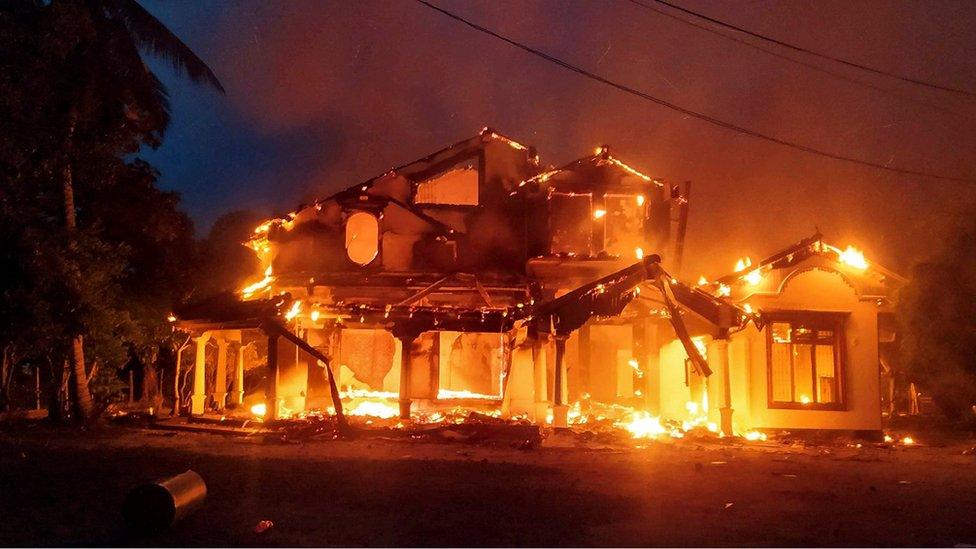
The home of government minister Sananth Nishantha was among several set on fire
Police and riot squads were deployed, and tear gas and water cannon were fired at government supporters after they breached police lines and attacked protesters using sticks and poles.
Angry demonstrators retaliated, attacking government supporters and targeting ruling party MPs, including one who shot two people after a mob swarmed his car and then killed himself, according to police.
As the night went on, mobs of protesters across the country torched houses belonging to the Rajapaksas, various ministers and MPs. This included a house turned into a controversial museum by the Rajapaksas in the family's ancestral village in Hambantota in southern Sri Lanka.
Areas near the president's official residence were also set ablaze, according to reports. A municipal lawmaker died in hospital after an attack on his house.
Following Mahinda Rajapaksa's resignation, protesters attempted to breach the inner compound of Temple Trees where he was staying along with several loyalists, and set fire to a bus outside the home. Police fired shots in the air and tear gas in an attempt to disperse them.
Mr Rajapaksa was flown out of Colombo to an undisclosed location on Tuesday morning.
Elsewhere in Colombo, tensions remained high. Men armed with sticks and rods had established road blocks on the routes leading to and from the airport, and police and security forces - usually a common sight in the area - were nowhere to be seen.
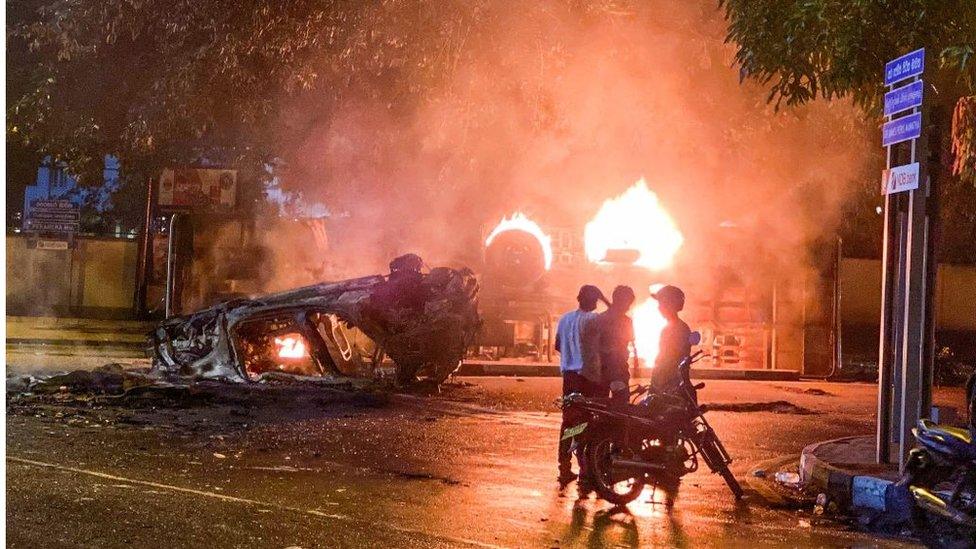
Vehicles were set alight outside Mahinda Rajapaksa's official residence
Sri Lanka is facing its worst economic crisis since gaining independence from Britain in 1948, and people are furious because the cost of living has become unaffordable.
The country's foreign currency reserves have virtually run dry, and people can no longer afford essential items including food, medicines and fuel.
The government has requested emergency financial help. It blames the Covid pandemic, which all but killed off Sri Lanka's tourist trade - one of its biggest foreign currency earners.
But many experts say economic mismanagement is also to blame.
Additional reporting by Tessa Wong in Singapore and Simon Fraser in London.
- Published8 May 2022
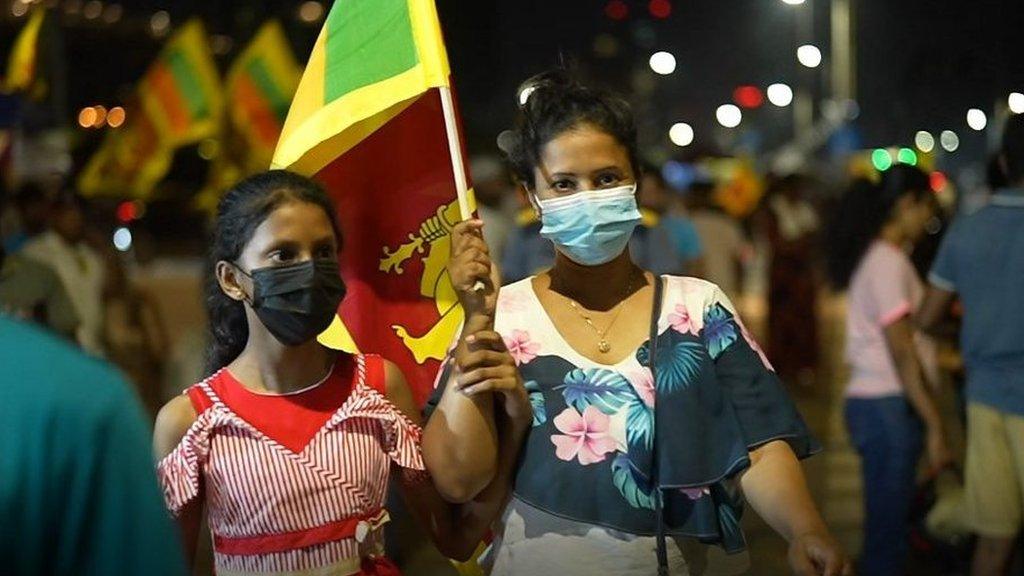
- Published29 March 2023
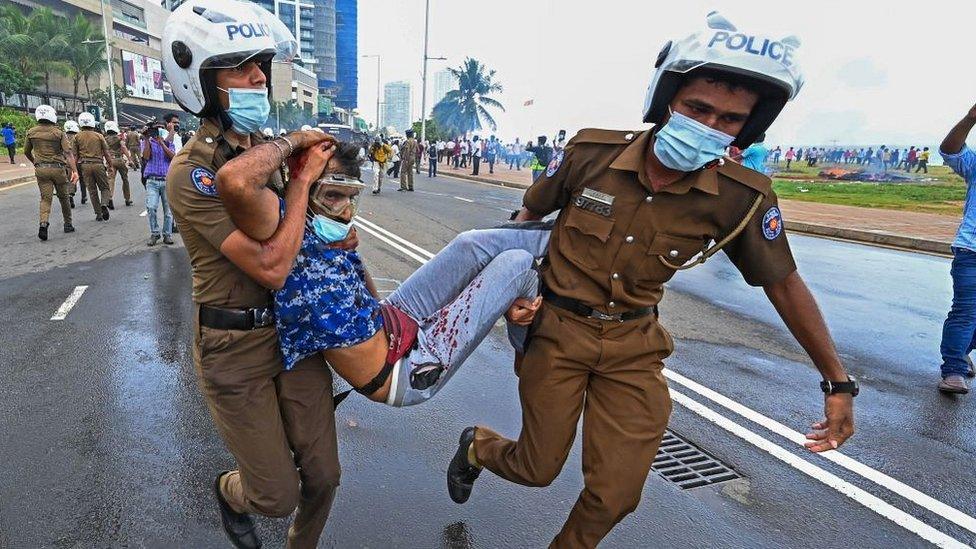
- Published4 May 2022
